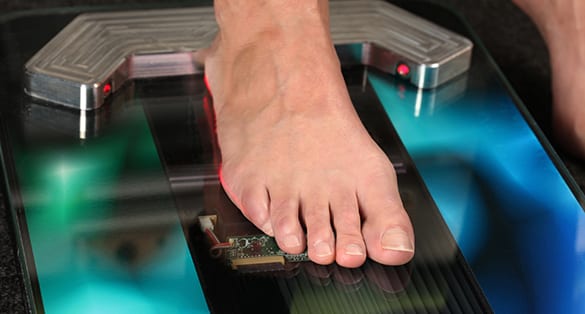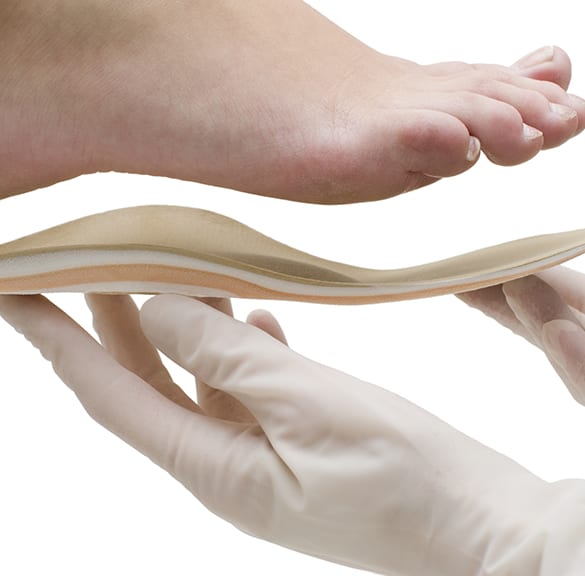
Custom Orthotics can help to correct foot issues and relieve discomfort.
Some foot problems cause structures in one or both feet to be misaligned or off balance enough to make walking, running, jogging, or even standing painful enough to be a distraction. A solution that often provides some type of relief for many individuals with foot problems is orthotic shoe devices.
- Over-the-counter orthotics are general to some common conditions
- Custom orthotics are made specifically for the patient for maximum effect
CONTACT US TODAY
What Orthotics Do
The purpose of orthotics is to place the affected foot in a neutral position and restore balance. Maintaining a neutral foot position helps with overall alignment, which can help minimize back pain that’s sometimes triggered by pressure from misalignment of feet extending to legs and up into the lower back.
Foot-support products can be as basic as foot pad or heel insert, or as personalized as custom-molded inserts or ankle braces. In some cases, shoes may be specially modified to provide the right kind of support. An orthotic device may be recommended to achieve the following goals:
- Supporting or realigning feet and ankles
- Preventing or correcting foot deformities
- Improving overall foot or ankle function


Functional Orthotics
When abnormal foot pronation is the main cause or a contributing factor to foot pain, functional orthotic devices may provide the right amount of added support. Such devices are usually made of strong plastic polymer materials and designed to be durable enough to stabilize the foot. Orthotics fitting into this category include shoe and heel inserts and in-shoe braces.
Functional orthotics may also correct many common foot deformities and reduce the burden on feet that sometimes results from regular movements of legs and feet. Added support provided for the various joints in the foot can reduce the risk of injury from repetitive movements and constant stress of bones and tissues in a foot.
Accommodative Orthotics
Foot pain that’s mild in nature is often treated with accommodative orthotics. Such devices are usually used on children with foot problems that can be corrected during the time when bones of the feet are still developing. Devices that are accommodative include:
- Splints
- Gait plates
- Braces
- Night bars (hold feet at proper angle while sleeping)
Over-the-Counter vs. Custom Orthotics
OTC orthotics typically include insoles and inserts designed to address common foot issues. Once made with plaster molds of a patient’s foot, custom-made orthotics are now created by doing a computerized foot analysis. During the process, the specific dynamics of the foot are used to create a device that provides the right type of support. Custom orthotic devices are often more of an investment, although they last longer. Custom products are available by prescription. Some of the cost may be covered by insurance.
While many people do benefit from either over-the-counter or custom orthotics, additional care is sometimes needed to address foot problems. For instance, if orthotic devices aren’t providing sufficient relief from pain related to fallen arches, physical therapy and treatment with injections to minimize inflammation may be recommended. Paying attention to choices with footwear and posture while standing may also minimize foot pain.




